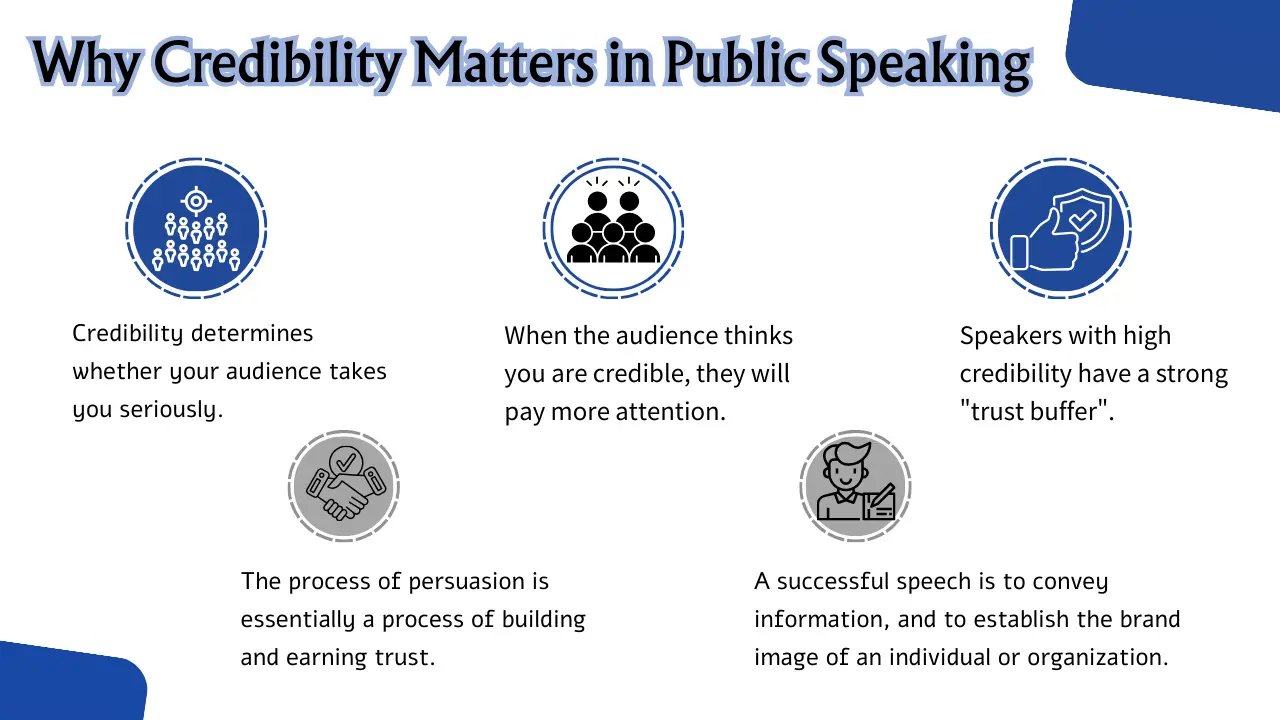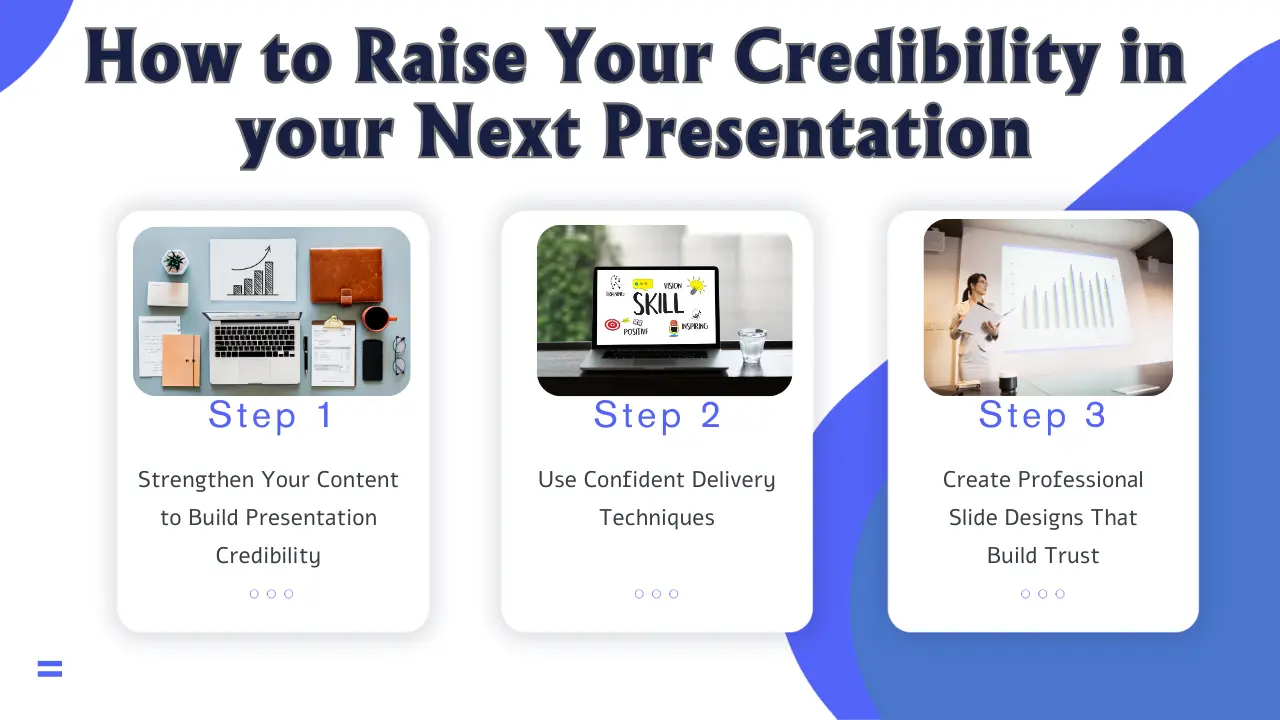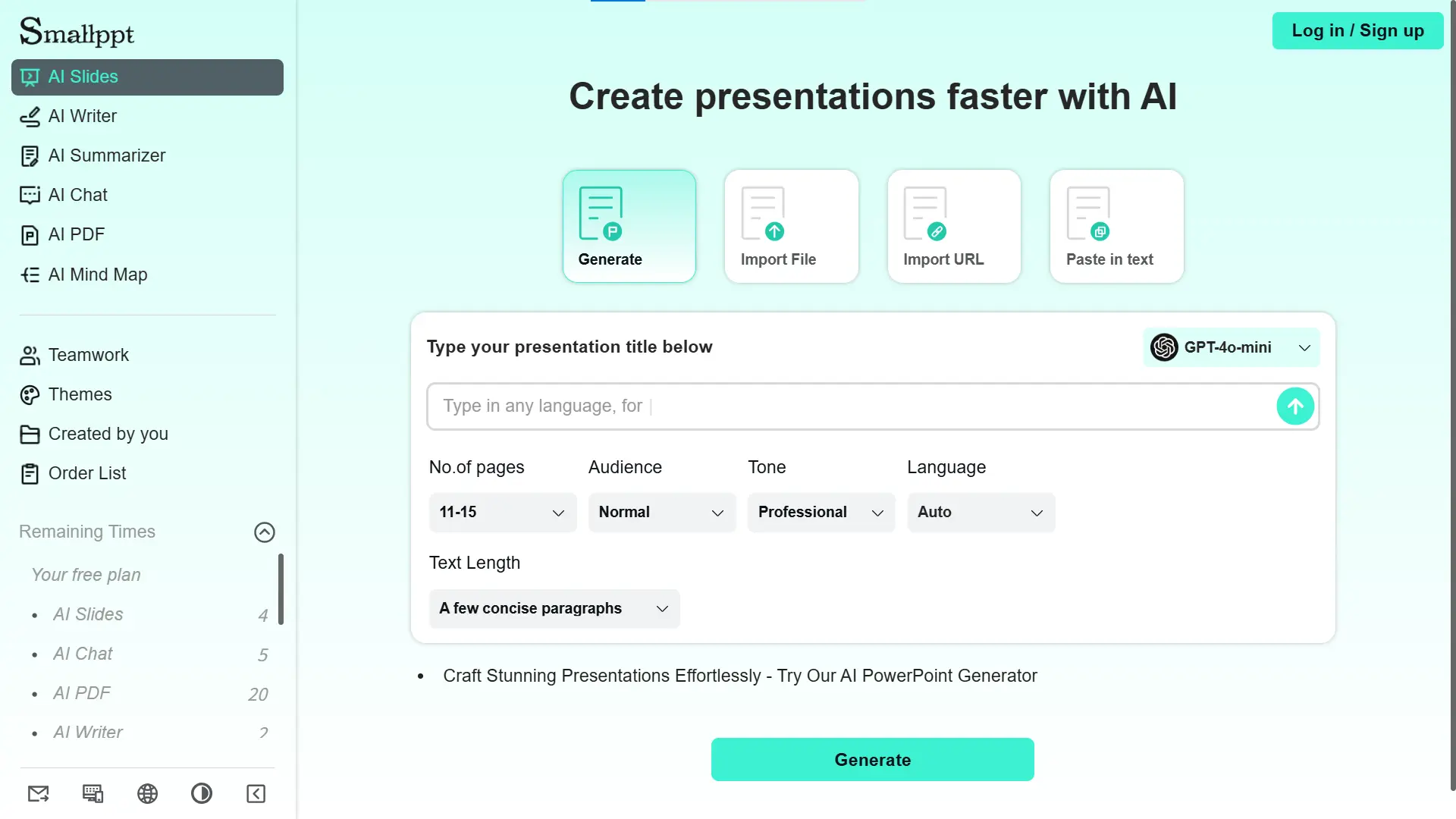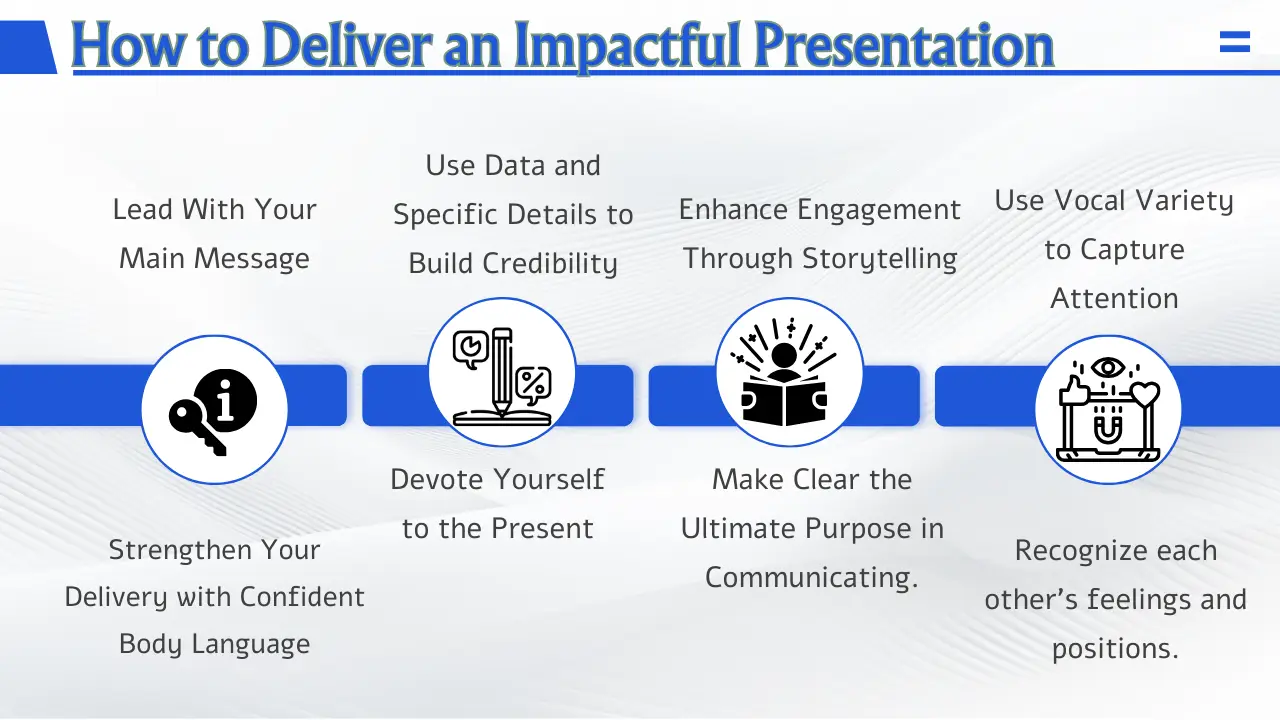
Today, we’re talking about one of the most important presentation skills: building credibility. I believe everyone will express admiration and even envy for the slide presenter who delivered slides flawlessly on stage, projected confidence, resonated with the audience, and gained the trust of customers. We also hope that one day we can shine like others.
And this article is about how to confidently deliver compelling slides. I believe it will help you.
Why Credibility Matters in Public Speaking
Credibility is essential in public speaking and directly determines success.
Here’s why credibility matters:
- Credibility determines whether your audience takes you seriously.
A speaker with low credibility will trigger the audience’s defense mechanisms. The audience will listen with suspicion, criticism, and even resistance, and they may question every point you make. In this case, no matter how wonderful your content is, it is difficult to be effectively received.
- Public speaking ultimately aims to influence how audiences think or act. The process of persuasion is essentially a process of building and earning trust.
If you can't trust yourself and what you convey is not credible, then the whole persuasion chain will break from the first step. No one will believe what a person they don't trust says, let alone be persuaded by him.
- When the audience thinks you are credible, they will pay more attention because they think the information is valuable. Their brains will be more willing to process and absorb this information, classify it as "important information," and store it in long-term memory.
- A successful speech is not only to convey information, but also an excellent opportunity to establish the brand image of an individual or organization.
- Speakers with high credibility have a strong "trust buffer". When there are small mistakes or sharp questions, the audience is more inclined to think that it is unintentional or understandable, and is willing to give you the opportunity to explain and correct.

Put simply, without credible statements, public speaking becomes an invalid "monologue". Information can't be transmitted, emotions can't resonate, and persuasion is out of the question. Credibility is the starting point of all effective communication.
How to Build Credibility in your Next Presentation in 3 easy Steps
Many presenters know their material well, but the audience has doubts about their professionalism because of poor expression, visual aids, or poor interaction with the audience.
There are three simple but extremely effective steps to enhance speaker credibility. This is not only about the content, but also about the way you present the content and connect with the audience.
Step 1: Strengthen Your Content to Build Presentation Credibility
- Data expression: turn vague descriptions into clear, concrete data
For example: Don't say, "Our products are very popular."Instead, we should say, "Our user base increased by 30% in the last quarter. The satisfaction survey shows that 95% of users are willing to recommend our products to others."
- Explicit information source: next to each key data or quoted point of view, clearly indicate the source.
- Be open about limitations. Mention potential risks and how you plan to address them.
For example: "Of course, this strategy may face the challenge of rising costs in the initial implementation stage, so we have formulated two sets of alternative budget plans, A and B, to control risks."
This can transform you from a "person who expresses personal opinions" to an “expert who relies on data and analysis". Lack of honesty will not only weaken your point of view, but will also show your objectivity and honesty, and greatly win trust.
Step 2: Use Confident Delivery Techniques
- Stand tall with good posture: stand tall with your chest open and core engaged, feet shoulder width apart, and avoid small shaking or arms crossed on your chest. This "confident posture" can instantly boost your presence.
- Make good use of pause and reduce filler words: replace "hmm", "ah", and "that" with a calm pause. Pause before the key content, which can attract attention; Pause after key points to let the audience absorb the information.
- Make eye contact: Don't glance or look at the ceiling. When telling a complete sentence, look at the audience gently and then move on to the next one. This can establish a personal connection with everyone in front of you.
Confident body language subconsciously signals competence. It fills the gap between "how much you know" and "how much you seem to know".
Step 3: Create Professional Slide Designs That Build Trust
- One slide, one message: Make sure that each slide only conveys one core message.
- Use a conclusive title: Don't use the topical title of "market performance", but use the conclusive title of "Q3's market share ranks first in the industry".
- Prioritize visuals: use more charts, pictures, and icons, and use shorter paragraphs. A clear trend graph is far more powerful and convincing than a three-line explanation.
Clear slides show you’ve organized complex information and respect the audience’s time. This makes you an expert who can simplify the complex.

Smallppt is the best aid in making professional-looking slides. The AI PowerPoint generator can automatically generate a first draft of slides with a complete structure and substantial content in dozens of seconds.
It has a professional design template library to ensure the unity and professionalism of visual style. It can automate typesetting and layout, one-click skin change/unified style, one-click generation, and automatic beautification of charts.

Through these three steps, you can successfully change the audience's inner question from "Why should I trust you?" to “This person speaks very clearly and makes sense.” Carefully understand these three steps, and I believe your next speech will be a success!
How to Deliver an Impactful Presentation: Practical Tips to Improve Your Speaking Skills
Improving the impact of your delivery is a skill that can be learned. It is not only "what to say", but also "how to say it", aiming at making your words more impactful, more compelling, and ultimately pushing others to act.
Lead With Your Main Message
This is in line with the brain's habit of processing information. The audience can immediately grasp the key points and understand your subsequent arguments with a framework.
Example:
Less Effective Version: "We analyzed last week's data and found that the conversion rate of channel A dropped by 5%, user activity on channel B also declined, and competitor X recently launched a new feature… Therefore, we believe we should adjust our marketing strategy."
More Effective Version: "I recommend an immediate adjustment to this quarter's marketing strategy. There are three reasons: First, the conversion rate of core channel A dropped by 5%; second…; third…."
Use Data and Specific Details to Build Credibility
Data builds credibility, and concrete details make your message far more convincing.
Example:
Vague: "This product has received a very good response."
Specific: "This product achieved an 85% user retention rate within a week of its launch and received over 500 positive reviews."
Enhance Engagement Through Storytelling
Stories create emotional connection and engagement in the audience, making dry information vivid and memorable.
Example: Instead of saying "Our service is very considerate," tell a story: "Last week, one of our clients, Mr. Smith, encountered an urgent problem late at night. Our customer service staff had already gone off duty, but through our intelligent system… We ultimately solved Mr. Smith's problem within 15 minutes. This is the level of service we strive to deliver."
Use Vocal Variety to Capture Attention
- Pauses: Well-timed pauses before and after key points attract attention and make you appear more composed.
- Volume and Pace: Emphasize and slow down important points; speak at a brisk pace for everyday speech. A varied voice grabs attention.
- Cut Filler Words: Get rid of filler words like "um," "ah," and "that," and replace them with silence.
- A varied and powerful voice conveys confidence and authority.
Strengthen Your Delivery with Confident Body Language
- Eye Contact: Maintain steady, direct eye contact with the audience, focusing on one person for a few seconds at a time.
- Open Posture: Stand tall, open your shoulders, and avoid crossing your arms.
- Gestures: Use open, purposeful gestures to emphasize key points, but avoid trivial movements.
Your body language shapes how people perceive you—often before you say a word.
Devote Yourself to the Present
Whether for a person or a group of people, devote yourself to the present. Really listen and understand each other's reactions and adjust your expression accordingly.
When you are completely present, the other person can feel respected and concerned. This connection is what makes your communication truly influential.
Make Clear the Ultimate Purpose in Communicating
Is it to solve problems together? Is it to inspire thinking? Is it to promote cooperation? Let all your words serve this positive intention.
Clear intentions will be conveyed through your energy state, giving your message clarity and conviction.
Recognize each other's feelings and positions
Before expressing your own views, try to repeat and recognize each other's feelings and positions. "I understand your concern is ...", "From your point of view, this is indeed ..."
When people feel that they are understood, people become less defensive, and they will be more willing to listen to your views openly. This is the key to win-win communication and influence.

Start practicing these presentation techniques today to make your communication clearer, more confident, and more persuasive.
FAQs About the Credibility of the Speech
Q1: Why is credibility important in public speaking?
The credibility of the speech is the starting point of all effective communication. Without credibility, public speaking becomes an invalid "monologue". Information can't be transmitted, emotions can't resonate, and persuasion is out of the question.
Q2: What are the main aspects to improve the credibility of the speech?
Mainly in three aspects: content, expression, and visual effect.
Q3: What are the expressive skills of public speaking?
A dynamic and powerful voice, using powerful body language.
Q4: What AI tools can help create visual presentation slides?
Smallppt is recommended, which transforms slide production from a laborious design task and manual labor into an efficient content editing and calibration process.


